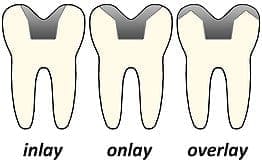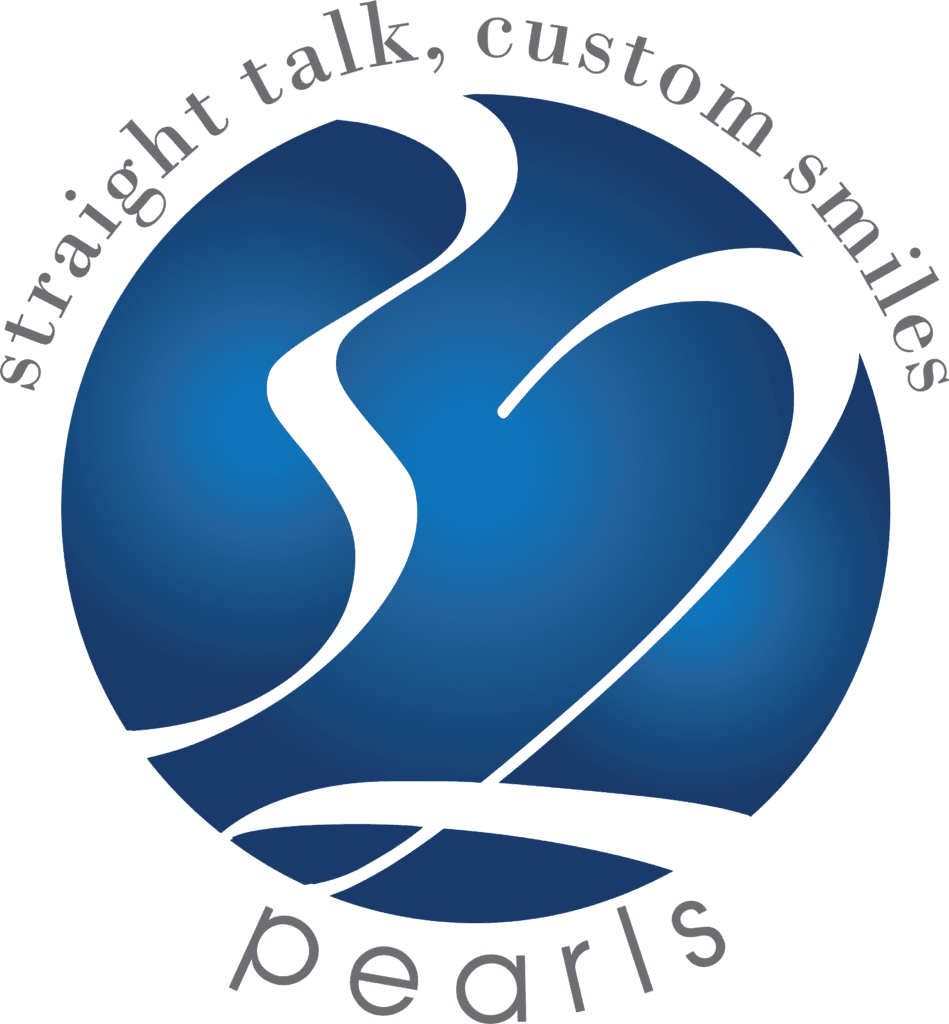Inlays, Onlays, and Fillings in Seattle
Dentistry Inlays, Onlays and Fillings at Seattle’s dental experts, 32 Pearls
When more than a third of a tooth’s biting surface is damaged, or a broken tooth needs repair, a porcelain inlay or onlay may be required, especially on molars. These naturally contoured restorations are bonded into place using a strong composite resin. Inlays and Onlays protect teeth similarly as crowns but conserve more natural tooth structure and your tooth’s natural color. 32 Pearls Seattle and 32 Pearls Tacoma offices are here to serve you with your dentistry inlays, onlays, and fillings. If you find yourself in a situation where your tooth is broken, be sure to get to the dental office as soon as possible. If you feel even the slightest pain, be sure to contact us.

Inlays and onlay fillings are made to fit the specific size of the cavity or damaged area of the tooth.
Reasons for Inlays and Onlays treatment
Inlays and onlays are fillings to treat, repair, and fill in a small area of a damaged tooth but not the whole tooth. Reasons for an inlay or only filling include:
- Mild or moderate decay
- Cracked tooth
- Fractured tooth
- Teeth damaged from grinding
- Cavities
- Cavity repairs
- Worn-out fillings
- Hard to reach flossing or brushing areas
- Forgotten molars
- Broken tooth
Differences Between Inlays and Onlays
The difference between inlays and an onlays is an inlay covers the surface of the tooth while the inlay fills the area between the cusps but not over them.
An inlay seeps and covers the depressions and crevices of a tooth and will protect the chewing surface between the cusps.
A cusp is the pointy part of a tooth. Elevated, raised, jagged pieces of teeth are cusps. The point in your canine teeth is the cusp of the tooth. You may have many rough, edgy nodules or ridges in your teeth as well. Inlays and Onlays will help protect these areas or repair damage.
Inlays are fillings that cover the top surface of a tooth and do not reach over the cusps. Onlays cover the individual cusps on the teeth and will go up the wall of the cusps while an overlay will completely cover the remaining cusps.
Inlays and onlays are made separately at a lab and not always at the dentist’s office. Sometimes they are made at the office the same day as your visit. The decision on the two depends on the filling required. Be sure to ask the staff at 32 Pearls if they can prepare your fillings at the office or if they are sent out.
Different Materials Make Fillings:
Amalgam – Amalgam is the most trusted use for filling cavities, especially in hard to reach areas such as molars. Amalgam is a durable material made from a mix of metal elements. They are noticeable and the least expensive.
Ceramic – Looks better and appears more like natural teeth. Ceramic does not have the strength of metal and can break.
Composite – Resin composite is used primarily for fillings because it can provide aesthetics. Composites are layers of woven material that stretches and is easy to contour.
Gold – An infrequent restoration is a gold foil inlay made of gold. It is used in some cases because its durability lasts so long.
Inlay and onlay procedures
A newly discovered cavity with inlay or onlay treatment will save a tooth. The procedure for inlays and onlays are the same. They both include cleaning, molding of the tooth, images, and a newly manufactured piece to fill the tooth. Fillings are minimally invasive cosmetic dentistry and are standard procedures.
- Preparation of the tooth – Removal of damage or decay from inside the tooth leaves the remaining healthy tooth, which is kept intact. Very little tooth is removed.
- A local anesthetic is administered based on the removal method of the damaged area.
- The anesthetic will numb your mouth, lips, and gums. You may ask about sedative dentistry for anxiety or pain. Please see our sedative dentistry information service page.
- The tooth is cleaned and prepared for a mold.
- A hole or area of repair is made in your tooth, allowing the area to be filled in with inlays or onlays.
- A mold is taken from the damaged tooth and sent to a lab for a customizable filling.
- The mold has to fit the teeth properly and fits the size before inlay or onlay bonding.
- The inlay or onlay is affixed in the tooth and saves your tooth.
It’s up to you to avoid future fillings.
These reminders and tips will help you to avoid inlays, onlays, and fillings.
- Brush and floss your teeth regularly. Ask your dentist about ways to clean your hard to reach teeth. Electric flossers and toothbrushes can get back where manual brushing can’t. Water picks and at-home cleaning dental systems are available.
- Brush after meals and rinse with fluoride toothpaste and mouthwash.
- Consider a dental sealant.
- Avoid candy and soft drinks or drinks with sugar and imitation coloring
- Eat more fruits and vegetables.
- Drink plenty of water.
- Make sure you visit your dentist for routine dental cleanings to ensure complete oral care.
Be sure to call 32 Pearls for emergency dental work. Contact us here.
